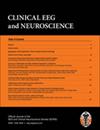LORETA Z 评分神经反馈与认知康复对阿片类药物成瘾者生活质量和反应抑制的比较分析
IF 1.7
4区 医学
Q3 CLINICAL NEUROLOGY
引用次数: 0
摘要
背景。以往的研究表明,传统的神经反馈和认知康复训练可以改善阿片类药物使用障碍患者的心理状况。然而,LORETA Z-score神经反馈(LZNFB)和注意偏差修正训练对这些患者的生活质量和抑制控制能力的影响尚未得到研究。与通常只关注表面脑电图活动的传统神经反馈相比,LZNFB 能够更精确地针对更深层的大脑结构。本研究旨在比较这两种方法对接受美沙酮维持疗法(MMT)的阿片类药物使用障碍男性患者的生活质量和反应抑制能力的影响。研究方法在这项采用前测、后测和随访设计的随机对照临床试验中,30名接受美沙酮维持治疗的阿片类药物使用障碍男性患者被随机分配到LZNFB、注意力偏差修正训练和对照组(仅接受美沙酮维持治疗)三组。LZNFB 组和认知康复组分别接受了 20 次和 15 次治疗。受试者分别在干预前、干预后和干预一个月后完成了波斯语版的世界卫生组织生活质量--BREEF问卷和Go/No-Go测试。收集到的数据使用 SPSS v.22 软件进行分析。结果显示两组干预者的生活质量得分均有明显改善,反应时间在测试后阶段均有明显减少(P <.05),其中 LZNFB 组的生活质量改善更多,反应抑制减少更多。一个月后,两组患者的生活质量都继续提高,而只有 LZNFB 组患者的反应时间继续缩短。结论LZNFB 和注意力偏差修正训练都能有效改善接受 MMT 治疗的 OUD 男性患者的生活质量和反应抑制,但 LZNFB 更为有效。本文章由计算机程序翻译,如有差异,请以英文原文为准。
Comparative Analysis of LORETA Z Score Neurofeedback and Cognitive Rehabilitation on Quality of Life and Response Inhibition in Individuals with Opioid Addiction
Background. Previous studies has shown that conventional neurofeedback and cognitive rehabilitation can improve psychological outcomes in people with opioid use disorders. However, the effectiveness of LORETA Z-score neurofeedback (LZNFB) and attention bias modification training on quality of life and inhibitory control of these people has not been investigated yet. LZNFB targets deeper brain structures with higher precision, compared to conventional neurofeedback that typically focuses on surface EEG activity. The present study aims to compare the effect of these two methods on quality of life and response inhibition in men with opioid use disorders under methadone maintenance therapy (MMT). Methods. In this randomized controlled clinical trial with a pre-test, post-test, follow-up design, 30 men with opioid use disorders under MMT were randomly assigned into three groups of LZNFB, attention bias modification training, and control (MMT alone). The LZNFB and Cognitive Rehabilitation groups received 20 and 15 sessions of treatment, respectively. The Persian versions WHO Quality of Life-BREEF questionnaire and the Go/No-Go test were completed by the participants before, immediately after, and one month after interventions. The collected data were analyzed in SPSS v.22 software. Results. Both intervention groups showed a significant improvement in quality-of-life score and a significant reduction in response time at the post-test phase ( P < .05), where LZNFB group showed more improvement in quality of life and more reduction in response inhibition. After one month, the increase in quality of life continued in both groups, while the decrease in response time continued only in the LZNFB group. Conclusion. Both LZNFB and attention bias modification training are effective in improving quality of life and response inhibition of men with OUD under MMT, however, LZNFB is more effective.
求助全文
通过发布文献求助,成功后即可免费获取论文全文。
去求助
来源期刊

Clinical EEG and Neuroscience
医学-临床神经学
CiteScore
5.20
自引率
5.00%
发文量
66
审稿时长
>12 weeks
期刊介绍:
Clinical EEG and Neuroscience conveys clinically relevant research and development in electroencephalography and neuroscience. Original articles on any aspect of clinical neurophysiology or related work in allied fields are invited for publication.
 求助内容:
求助内容: 应助结果提醒方式:
应助结果提醒方式:


